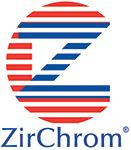Faster Analysis and Higher Efficiency with Thermally Stable HPLC Columns
The Application Notebook
In his article, published in 2000, David V. McCalley found large increases in the efficiency for basic compounds at elevated temperature
In his article, published in 2000, David V. McCalley found large increases in the efficiency for basic compounds at elevated temperature (1). McCalley suggested both that basic compounds should be analyzed at high temperature and that columns should be developed that are stable at high temperature.
In addition to improved efficiency, high temperature operation allows for dramatic improvements in analysis speed. Raising the temperature decreases mobile phase viscosity, allowing for increased eluent flow rate (and faster analysis) without excessive back pressure.
Experimental
A mixture of antihistamines was separated at room temperature using a ZirChrom®-PBD column. The separation conditions were as follows:
Column: 4.6 mm × 100 mm ZirChrom-PBD
Mobile Phase: 29/71 ACN / 50mM Tetramethylammonium hydroxide, pH 12.2
Injection Vol.: 0.5 µL
Pressure Drop: 195 bar
Detection: UV at 254 nm
The initial separation is shown in Figure 1a. Then, the temperature was increased to 50 °C, and the eluent flow rate also increased to maintain the same system back pressure. The separation (not shown) was more than twice as fast, with the resolution of the two closely eluting compounds maintained.

Figure 1: Separation of antihistamines at room temperature (a) and at 80 °C (b). 1 = Doxylamine, 2 = Methapyrilene, 3 = Chlorpheniramine, 4 = Triprolidine, 5 = Meclizine.
Finally, the temperature was increased to 80 °C, again increasing the eluent flow rate to maintain system back pressure. Now the separation is five times faster, maintaining the same resolution of the closely eluting peaks (see Figure 1b).
Note that even temperature-sensitive compounds can benefit from modest increases in temperature, making faster analysis possible. ZirChrom's technical support group has extensive experience in this area, and would be happy to help you with your particular application.
ZirChrom columns combine the high efficiency usually associated with silica columns with complete chemical and thermal stability.
References
(1) D.V. McCalley, J. Chrom. A902, 311–321 (2000).

ZirChrom Separations, Inc.
617 Pierce Street, Anoka, MN 55303
tel. 1 (866) STABLE-1
Website: www.zirchrom.com

SEC-MALS of Antibody Therapeutics—A Robust Method for In-Depth Sample Characterization
June 1st 2022Monoclonal antibodies (mAbs) are effective therapeutics for cancers, auto-immune diseases, viral infections, and other diseases. Recent developments in antibody therapeutics aim to add more specific binding regions (bi- and multi-specificity) to increase their effectiveness and/or to downsize the molecule to the specific binding regions (for example, scFv or Fab fragment) to achieve better penetration of the tissue. As the molecule gets more complex, the possible high and low molecular weight (H/LMW) impurities become more complex, too. In order to accurately analyze the various species, more advanced detection than ultraviolet (UV) is required to characterize a mAb sample.














